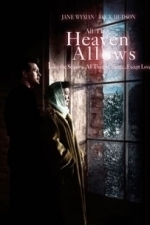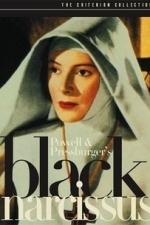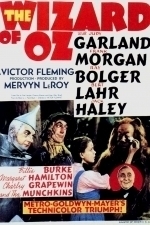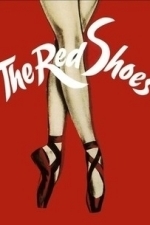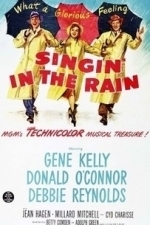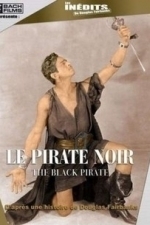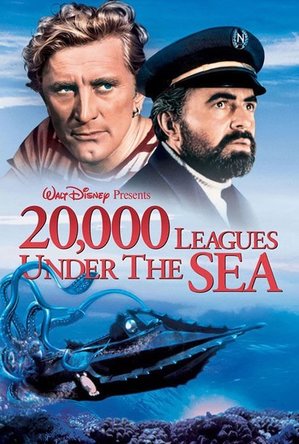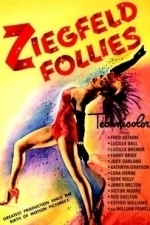Search
Search results
David Markey recommended All That Heaven Allows (1955) in Movies (curated)
Guy Maddin recommended Black Narcissus (1947) in Movies (curated)
Molly Shannon recommended The Wizard of Oz (1939) in Movies (curated)
Marcel Dzama recommended The Red Shoes (1948) in Movies (curated)
Scott Morse recommended The Red Shoes (1948) in Movies (curated)
Dan Stevens recommended Singin' in the Rain (1952) in Movies (curated)
RəX Regent (349 KP) rated The Black Pirate (1926) in Movies
Feb 18, 2019
Two-tone Techncolor milestone
Two Tone Technicolor in all its glory! This is it. The first widely distributed Technicolor movie back before we even had sound. This was hardly the first foray into colour, in fact colour almost goes as far back as film itself, as does sound, but it was not until the mid-1920’s that breakthroughs in both mediums would bring them into mainstream.
Sound would take first, with Technicolor taking just a little longer, mainly due to the technical issues of using it both in front and behind the camera. But as time went on, these issues were gradually dealt with with the rest is cinema history.
So, having gotten the technical bit out of the way, on to the Douglas Fairbanks Jr. blockbuster. And that is precisely want this was. A by-the-numbers acrobatic action movie by the undisputed star of the day, Fairbanks.
The plot follows a Duke (Fairbanks) whose ship is attacked and destroyed by a Pirates. He is the soul survivor and vows revenge. He soon finds himself in the company of the very pirates he is looking for and infiltrates their crew by being the best god-damn pirate there ever was!
He meets a princess (Billie Dove) and saves the day, gets the girl and the evil pirates are dispatched. All, amidst lots of colourful blood, to emphasise the Technicolor I suppose and slides down a few sails with his dagger along the way.
The performances are typical for a Hollywoodland movie of the day, but besides the outstanding physicality of Douglas, I would not say that there was anything particularly noteworthy about the acting, let alone the production on the whole. Having said that, the tone and cliche’s which this film has brought to the genre as whole are legendary and there is that foray into colour of course.
This were it all began folks…
The DVD
Unfortunately my copy was just the cheap R-0 version, whcih was clearly (ironically) taken from a old VHS recording. The colour is vivid but wrong. Greens have replaced blacks and the overall print quality was poor but watchable. I have seen bit s of the KINO HD Blu-ray edition and this looks great.
It also has the original score by Mortimer Wilson, something whcih this bargain basement DVD does not. The music supplied is okay; a mix of classical pieces on a loop but none this is cued and rarely suits the scenes let alone the action on screen. Further proof that there never was such a thing as silent cinema, just no synchronised sound.
For the real experience, get the Blu-ray, though it is very expensive at the moment, but if you just want to see what all the fuss is about, this DVD is quite watchable, at least as an entry version.
Me, I am after the upgrade!
Sound would take first, with Technicolor taking just a little longer, mainly due to the technical issues of using it both in front and behind the camera. But as time went on, these issues were gradually dealt with with the rest is cinema history.
So, having gotten the technical bit out of the way, on to the Douglas Fairbanks Jr. blockbuster. And that is precisely want this was. A by-the-numbers acrobatic action movie by the undisputed star of the day, Fairbanks.
The plot follows a Duke (Fairbanks) whose ship is attacked and destroyed by a Pirates. He is the soul survivor and vows revenge. He soon finds himself in the company of the very pirates he is looking for and infiltrates their crew by being the best god-damn pirate there ever was!
He meets a princess (Billie Dove) and saves the day, gets the girl and the evil pirates are dispatched. All, amidst lots of colourful blood, to emphasise the Technicolor I suppose and slides down a few sails with his dagger along the way.
The performances are typical for a Hollywoodland movie of the day, but besides the outstanding physicality of Douglas, I would not say that there was anything particularly noteworthy about the acting, let alone the production on the whole. Having said that, the tone and cliche’s which this film has brought to the genre as whole are legendary and there is that foray into colour of course.
This were it all began folks…
The DVD
Unfortunately my copy was just the cheap R-0 version, whcih was clearly (ironically) taken from a old VHS recording. The colour is vivid but wrong. Greens have replaced blacks and the overall print quality was poor but watchable. I have seen bit s of the KINO HD Blu-ray edition and this looks great.
It also has the original score by Mortimer Wilson, something whcih this bargain basement DVD does not. The music supplied is okay; a mix of classical pieces on a loop but none this is cued and rarely suits the scenes let alone the action on screen. Further proof that there never was such a thing as silent cinema, just no synchronised sound.
For the real experience, get the Blu-ray, though it is very expensive at the moment, but if you just want to see what all the fuss is about, this DVD is quite watchable, at least as an entry version.
Me, I am after the upgrade!
Kirk Bage (1775 KP) rated 20,000 Leagues Under the Sea (1954) in Movies
Mar 3, 2020
In an attempt to make room for his production work, and to off-set his type-casting as hard nosed dramatic anti-heroes, Douglas took on a lighter supporting role in this adventure film, opposite James Mason as Captain Nemo. Stripy shirted Ned Land was no less macho than we had come to expect of him, but there was a degree of fun hitherto unseen in his career to date. Shot in Technicolor, with the grandeur of Cinemascope, it brought a whole new audience to his work, that may have previously avoided the gritty melodramas he was associated with. Many remember Douglas as the most exciting part of the film, as his insatiable energy dominates the mild style of Mason and eats up the screen.
